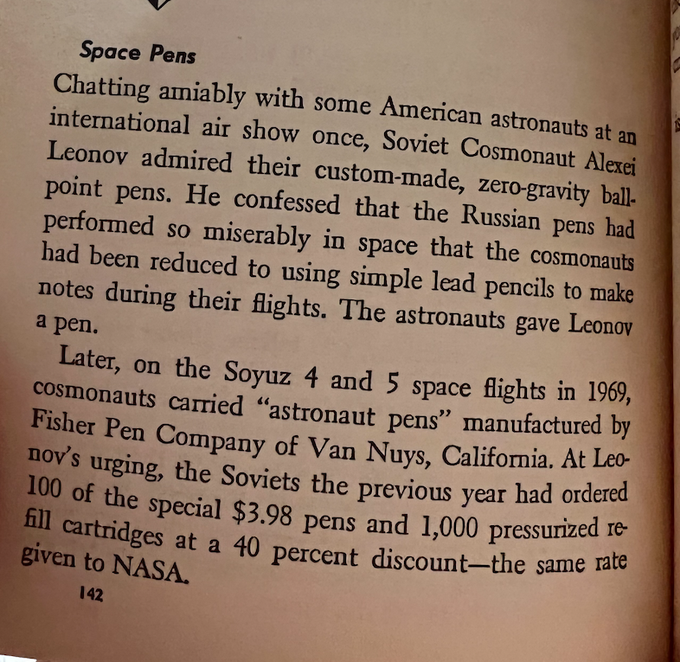
Here is more on the Fisher Space Pen.
U.S. Patent 3,285,228 was granted to Paul C. Fisher on 1966-11-15 for the “Anti-Gravity Pen”.

Here is more on the Fisher Space Pen.
U.S. Patent 3,285,228 was granted to Paul C. Fisher on 1966-11-15 for the “Anti-Gravity Pen”.
And after the Apollo 1 fire, we didn’t want to have graphite bits floating around a 100% oxygen environment.
In 1930, a Hungarian inventor observed children playing with marbles in a puddle, noticing that the marbles left a trail of water in their wake. That’s how the idea came about: why not use a ball-shaped metal nib for writing? This is how the pen was born. László József Biro shared his idea with his brother György, a chemist, and together they began researching and experimenting to create a new type of pen based on this concept. Finally, they found the perfect combination: a viscous ink and a tip with a small ball that rotated freely, preventing the ink from drying out and controlling its flow. They presented their invention at the Budapest International Fair in 1931 and patented it in 1938, although they did not market it immediately. With the start of World War II, the brothers emigrated to Argentina, where they founded a company in a garage. Although they were initially unsuccessful due to the high cost of the product, they secured a contract with the British Air Force, which boosted their popularity. In 1943, they licensed their invention to Eversharp Faber in the United States for $2 million. In 1950, Marcel Bich acquired the rights and, on the recommendation of an advertising expert, dropped the “h” from his surname and founded the company BICGroup. In that year, they launched the first BIC Cristal, one of the most perfect designs ever created, of which more than 20 million units are sold every day around the world. Since 1953, more than 100 billion BIC Cristals have been manufactured, making it the best-selling pen of all time.